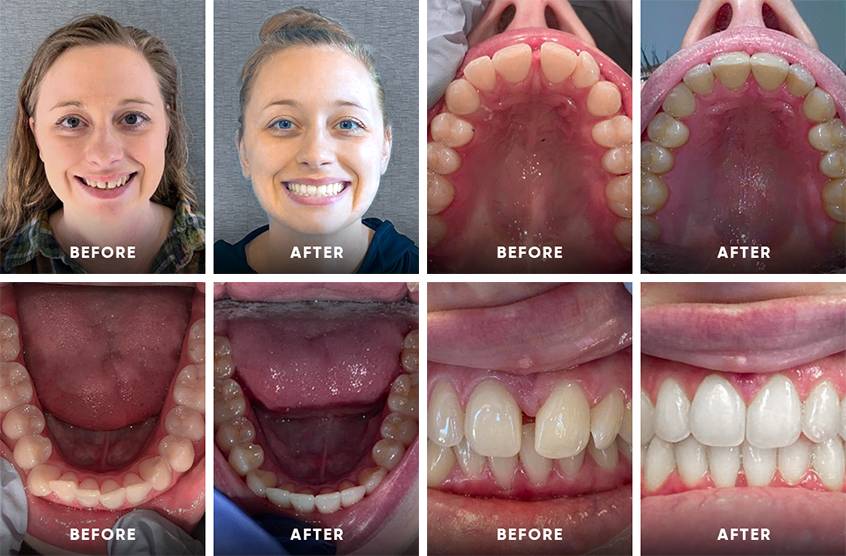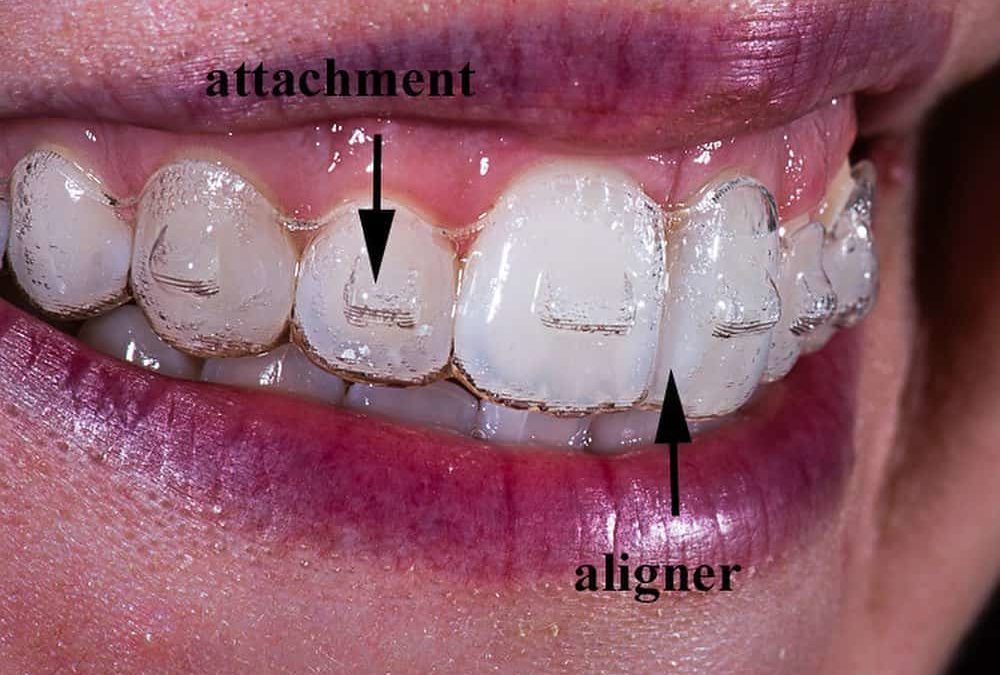How Invisalign Functions: Your Overview to Clear Aligners and Their Effectiveness
How Invisalign Functions: Your Overview to Clear Aligners and Their Effectiveness
Blog Article
Invisalign vs. Traditional Dental braces: Which Alternative Is Right for You?
When taking into consideration orthodontic treatment, the option in between Invisalign and standard dental braces provides a number of vital aspects that merit mindful assessment. Invisalign offers a discreet alternative with detachable aligners, while standard braces give an extra noticeable yet effective service for severe misalignment. Each choice includes unique benefits and disadvantages associated with visual appeals, comfort, treatment duration, and cost. Comprehending these nuances is important for making an educated choice that straightens with your individual choices and lifestyle. The question stays: which alternative will best meet your orthodontic requirements and expectations?
Introduction of Treatment Choices

On the other hand, typical braces contain steel brackets and cables that are adhered to the teeth. This approach applies constant stress over time to achieve placement. While reliable for complex orthodontic problems, typical braces require routine gos to for modifications and can posture challenges in preserving oral health as a result of the difficulty of cleaning up about braces and cords.
Both options have their values, and the selection often depends upon certain oral problems, way of living choices, and patient compliance. Eventually, getting in touch with an orthodontic expert is vital for determining the most suitable treatment strategy customized to individual requirements. Comprehending the subtleties of each alternative can significantly influence the total success of orthodontic therapy.
Aesthetic Factors To Consider
A considerable variable influencing the option in between Invisalign and conventional dental braces is the aesthetic charm each therapy uses. Invisalign aligners are crafted from clear plastic, making them virtually unnoticeable when used. This discreet look is particularly attracting grownups and teens that may feel uncomfortable concerning their orthodontic therapy. The capability to maintain an all-natural smile throughout the placement procedure can considerably enhance the patient's self-confidence in expert and social setups.
On the other hand, typical braces consist of metal braces and cables, which can be more recognizable. While improvements in orthodontic technology have actually led to the growth of smaller braces and tinted elastics, conventional dental braces still maintain an even more conspicuous account. For some individuals, the exposure of dental braces may hinder them from seeking necessary treatment.
Inevitably, the option in between Invisalign and conventional dental braces may depend upon personal choices concerning looks. Clients that prioritize discernment typically favor Invisalign, while those who are much less worried concerning exposure might go with traditional dental braces. Understanding the aesthetic effects of each choice is vital for making a notified choice that lines up with one's way of living and choices.
Convenience and Convenience

In regards to comfort, Invisalign aligners are removable, enabling patients to appreciate their preferred foods without limitation and preserve optimal dental health. Brushing and flossing are streamlined, as the aligners can be secured during these routines, whereas traditional dental braces need careful steering around wires and braces.
Furthermore, Invisalign's modern system allows for less orthodontic gos to. Clients typically receive numerous collections of aligners at when, which can enhance the treatment procedure and reduce time invested in the orthodontist's chair. In comparison, typical dental braces require my blog normal modifications, making them less convenient for those with busy timetables. Invisalign. Overall, the convenience and comfort of Invisalign make it an attractive choice for several individuals looking for orthodontic therapy.
Treatment Period and Efficiency
While both Invisalign and conventional dental braces are efficient check in fixing oral misalignments, the duration of therapy can differ dramatically between the 2 alternatives. Typically, Invisalign therapy can take anywhere from 12 to 18 months, relying on the intricacy of the situation. The clear aligners work by slowly shifting teeth right into their desired settings, and normal follow-ups with an orthodontist help make sure progression stays on course.
In contrast, traditional braces frequently need a longer dedication, generally ranging from 18 months to three years. This is because of their set nature and the usage of braces and wires, which can be much more efficient for extreme imbalances and intricate cases (Invisalign). The therapy effectiveness of conventional dental braces is well-documented, as they enable for exact adjustments and better control over tooth motion
Eventually, the choice in between Invisalign and traditional dental braces may pivot on both the awaited therapy duration and the certain oral issues at hand. Consulting with an orthodontist is essential, as they can offer tailored referrals based upon private requirements, making sure the chosen method straightens with preferred durations and end results.
Expense Comparison and Insurance Alternatives
Expense plays a significant duty in the decision-making process for individuals considering orthodontic therapy, whether selecting Invisalign or conventional dental braces. Usually, the cost of Invisalign arrays from $3,000 to $8,000, while standard braces usually cost in between $2,000 and $6,000. Elements affecting these expenses consist of the complexity of the case, the period of treatment, and geographical area.
Insurance policy coverage can dramatically affect out-of-pocket expenditures. Numerous dental insurance policy plans provide partial insurance coverage for orthodontic treatments, however the specifics can differ commonly. It is crucial for individuals to evaluate their insurance plan to establish the extent of protection for either alternative. Typically, typical braces may be a lot more often covered by insurance plans compared to Invisalign, which some insurance companies categorize as a cosmetic treatment.
Furthermore, numerous orthodontic techniques supply flexible layaway plan, making both treatment choices much more obtainable. Patients should ask Resources about potential financing options and discounts for upfront payments. Assessing the overall cost, including insurance benefits and payment strategies, is important for making an informed decision that aligns with both visual choices and budget plan considerations.

Final Thought
In recap, the option in between Invisalign and typical dental braces rests on several aspects, including aesthetic preferences, convenience, therapy duration, and cost. Invisalign offers a very discreet, detachable choice that assists in oral hygiene and nutritional versatility, while standard braces may be better for intricate oral problems and typically come with a lower cost point. Ultimately, examination with an orthodontist is necessary to evaluate individual conditions and identify the most ideal treatment option for attaining ideal dental placement.
When thinking about orthodontic treatment, the selection between Invisalign and traditional dental braces presents numerous crucial factors that warrant cautious analysis.Comparing Invisalign and conventional braces exposes unique treatment choices for orthodontic improvement.While both Invisalign and conventional braces are effective in fixing dental misalignments, the duration of treatment can vary dramatically in between the two options.Price plays a substantial function in the decision-making procedure for individuals considering orthodontic treatment, whether deciding for Invisalign or traditional braces.In summary, the selection between Invisalign and conventional braces hinges on several factors, including visual choices, comfort, treatment period, and price.
Report this page